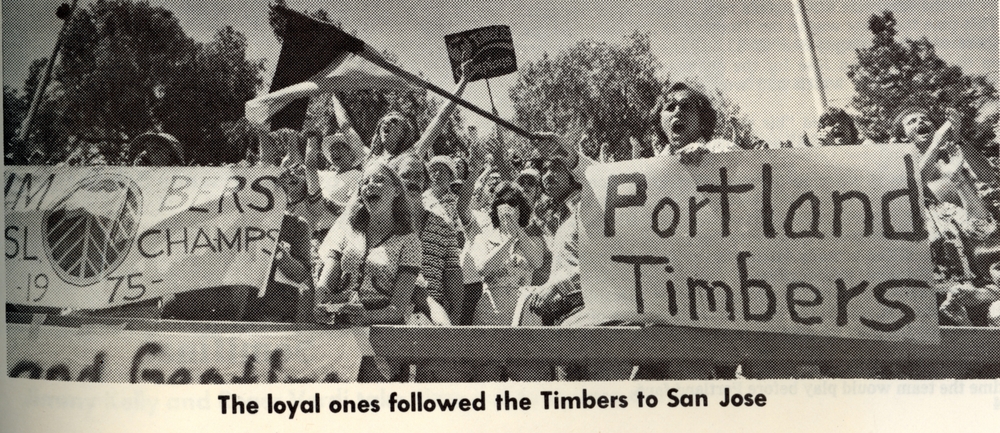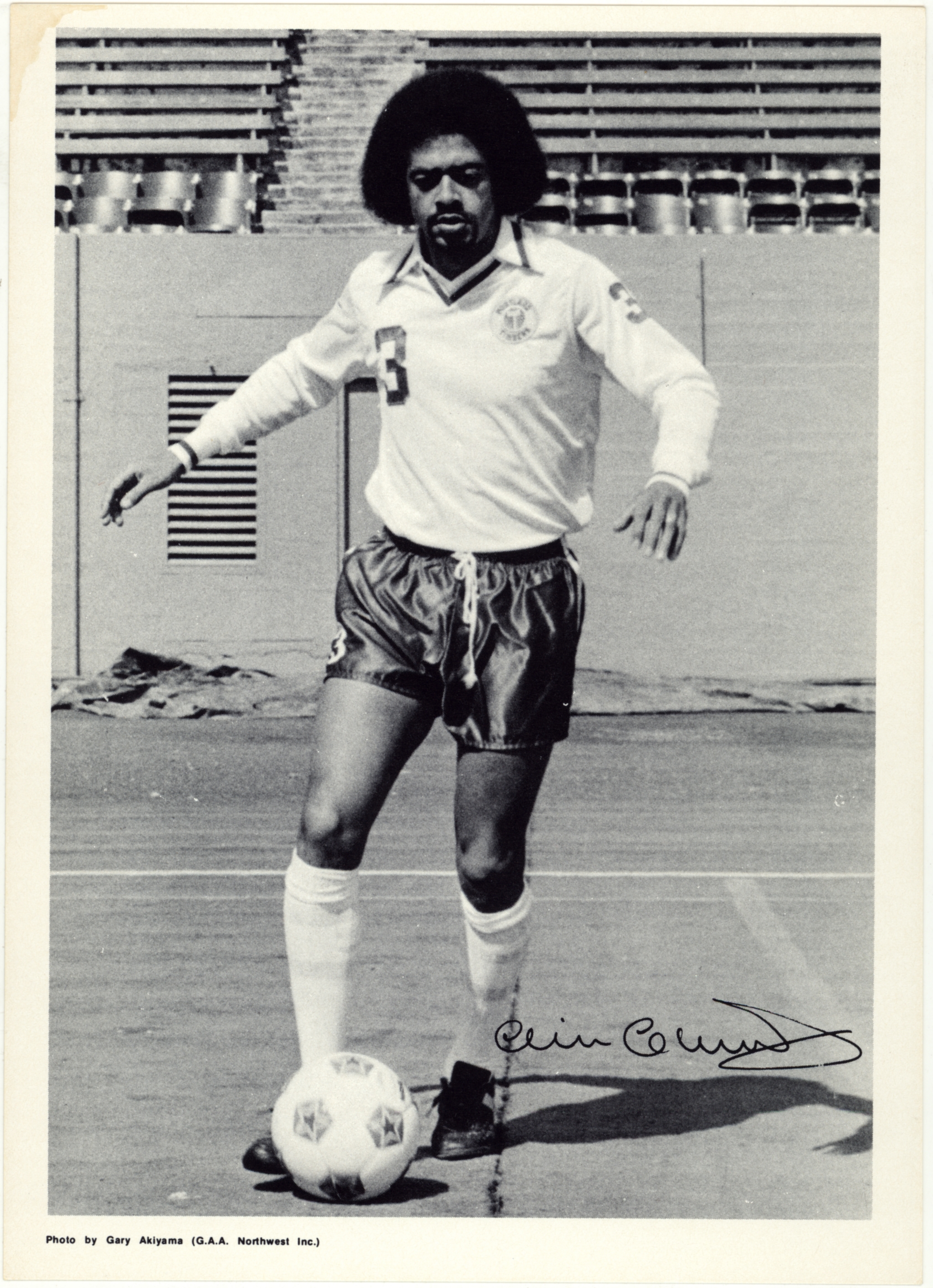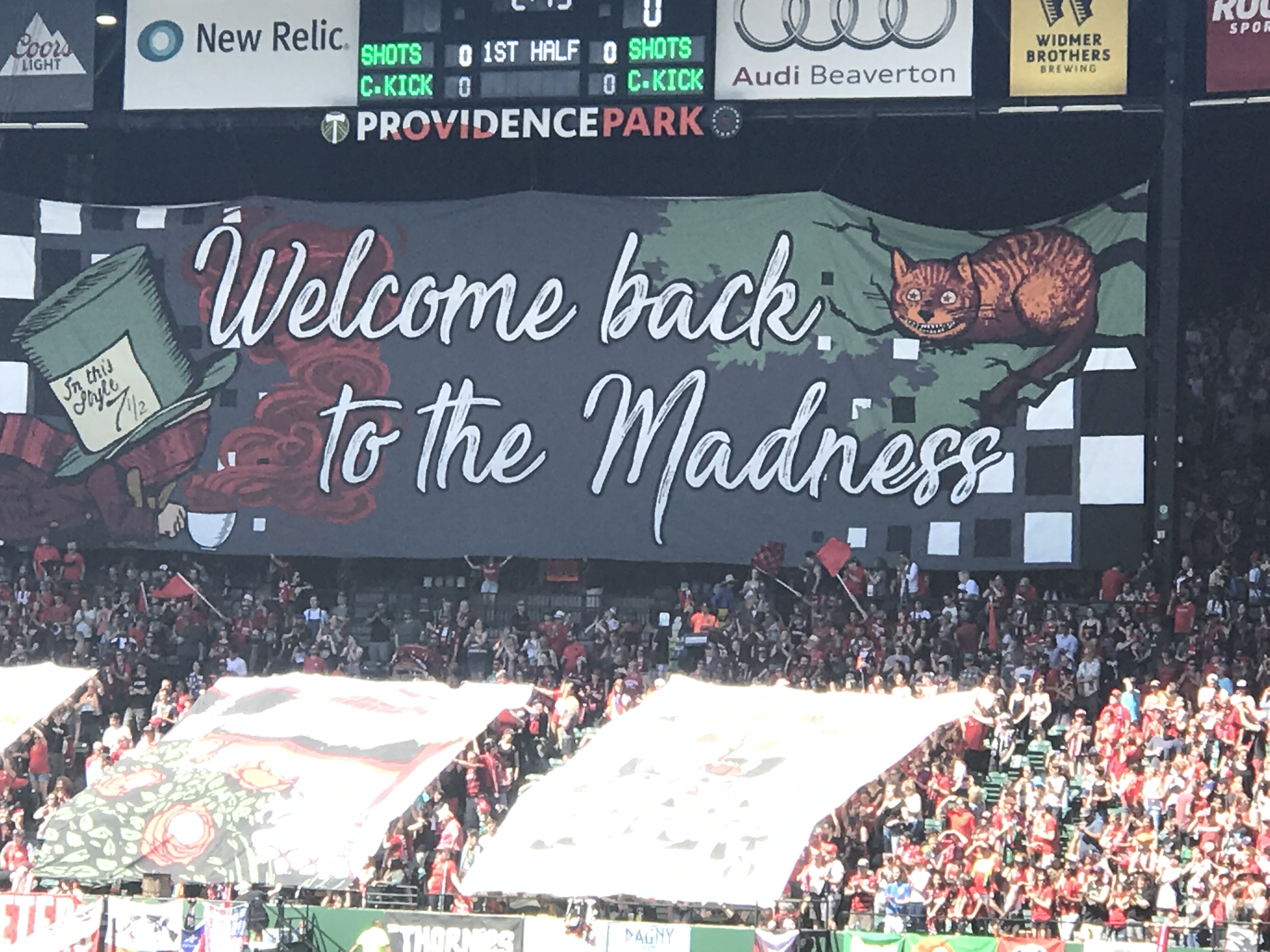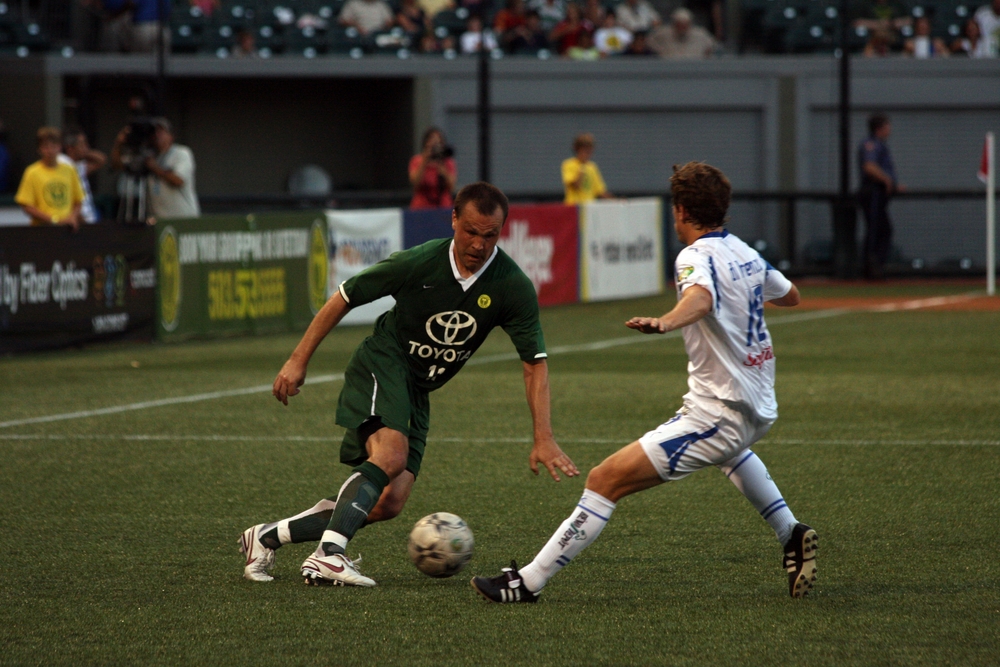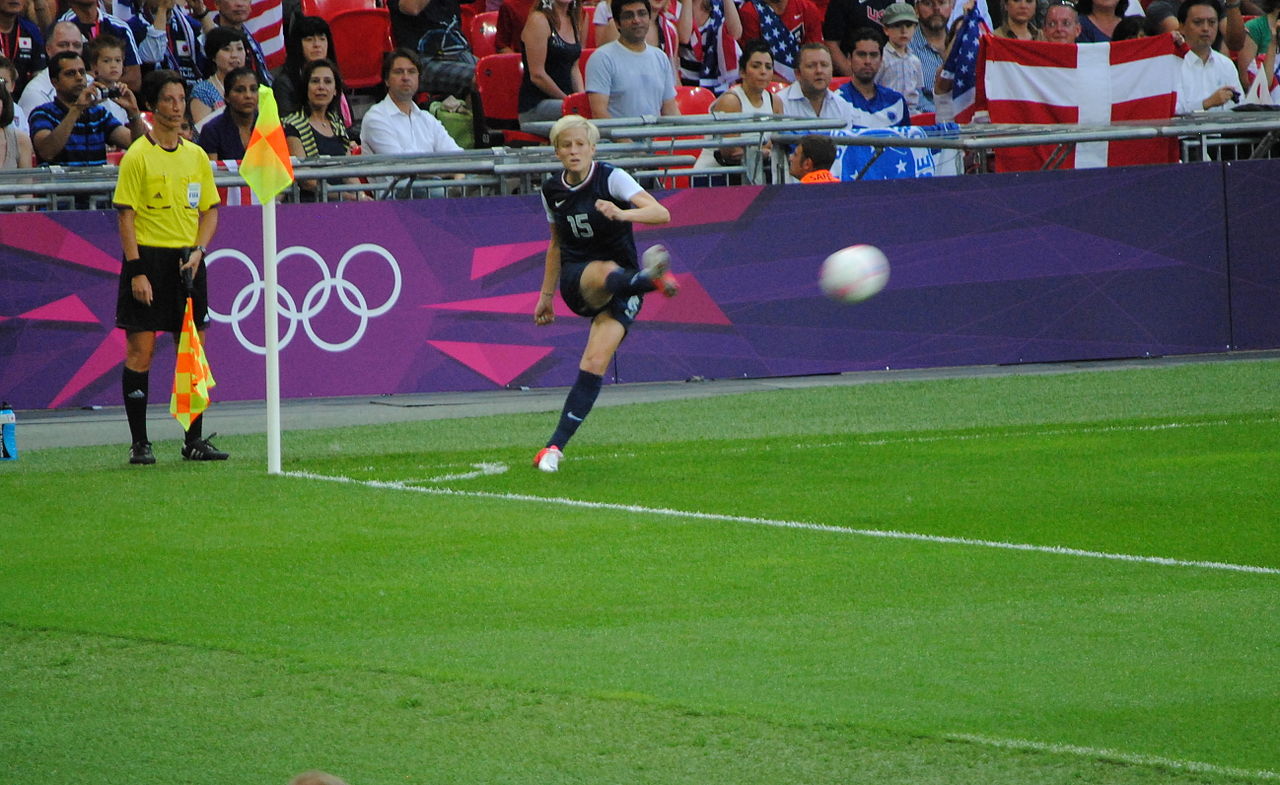The Portland Timbers soccer club came into existence in January 1975. By the end of the season, the local media were calling the Timbers the biggest sports story of the year.
Unlike the NBA’s Trail Blazers and the World Football League’s Storm, the Timbers were locally financed, drawing investment from businessmen in Portland and around the state. Portland attorney John Gilbertson was the club’s first president and leading investor.
The Timbers were not an instant hit with fans, losing two of their first three games, including the first professional soccer game at Civic Stadium against the Seattle Sounders on May 2. But by early summer, the Timbers began winning and attracting larger crowds.
Peter Withe, Jimmy Kelly, Willie Anderson, and Tony Betts were the offensive stars of the team. Defensively, the players were Graham Day, Mick Hoban, Ray Martin, and captain Brian Godfrey. Withe topped the team in scoring, with Betts contributing key goals, including the most famous goal in Timbers’ history: an overtime header against Seattle in the NASL quarterfinal round. Betts's goal came in front of a record 31,523 fans in the 27,000-capacity Civic Stadium. The new attendance record was shattered just five days later as the Timbers advanced to Soccer Bowl ’75, the North American Soccer League’s championship game, by defeating St. Louis Stars before 33,503 people. The two playoff games in Portland were the largest non-Pelé crowds in league history (Pelé was the star of the New York Cosmos).
With post-game parties at the Benson and Hilton Hotels, the 1975 Timbers were as accessible as any professional athletes in Portland’s sporting history. Fourteen of the seventeen players were from Great Britain and were locally known as Portland’s own "British invasion." The team was active in the community, giving clinics at schools, speaking at civic events, and making friends with City Councilwoman Mildred Schwab. Each Timbers player had a local host family, further connecting them to the Portland community. Many of the original players remained in Portland after their soccer careers ended, leading the Rose City’s development of youth soccer.
The 1975 Portland Timbers earned the city the moniker Soccer City, USA. Their first season, with a record of 16 wins and 6 losses, remains the most successful in Timbers history. The team lasted until 1982 and was reborn in 2001 as part of the United Soccer Leagues and promoted to Major League Soccer in 2011.
-
Portland Timbers fans.
Courtesy of the Portland Timbers
-
![Portland Timbers decal, about 1980.]()
Timbers logo b&w.
Portland Timbers decal, about 1980. Oreg. Hist. Soc. Research Lib., Collection 160
-
Portland Timbers, Charles, Clive.
Clive Charles, 1975. Courtesy Portland Timbers
Related Entries
-
![Portland Thorns]()
Portland Thorns
The Portland Thorns drew 16,479 fans to their first home game on April …
-
Portland Timbers
Local soccer aficionados may remember the glory days of the Timbers—the…
-
![University of Portland Pilots women's soccer]()
University of Portland Pilots women's soccer
The women’s soccer team is the most successful athletic club at the Uni…
Map This on the Oregon History WayFinder
The Oregon History Wayfinder is an interactive map that identifies significant places, people, and events in Oregon history.
Further Reading
Orr, Michael and Morgen Young. "Soccer in the Seventies: Chris Dangerfield and the Original Portland Timbers." Oregon Historical Quarterly 112:2 (Summer 2011), 240-251.
Orr, Michael. "First Time Around." The Blizzard. Issue Zero (2011), 63-69.
Tossel, David. Playing for Uncle Sam: The Brits' Story of the North American Soccer League. Edinburgh, Scotland, U.K.: Mainstream Publishing, 2003.

